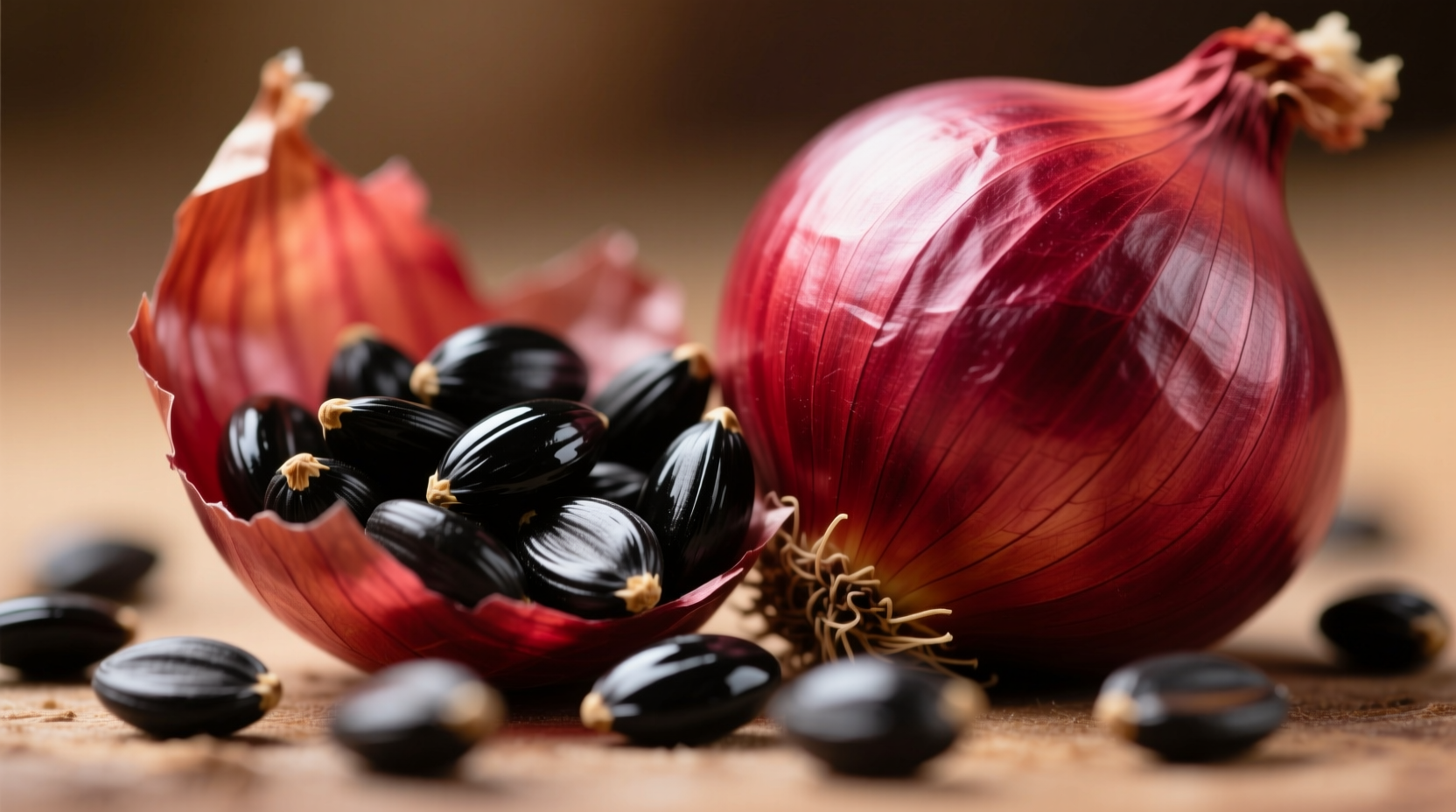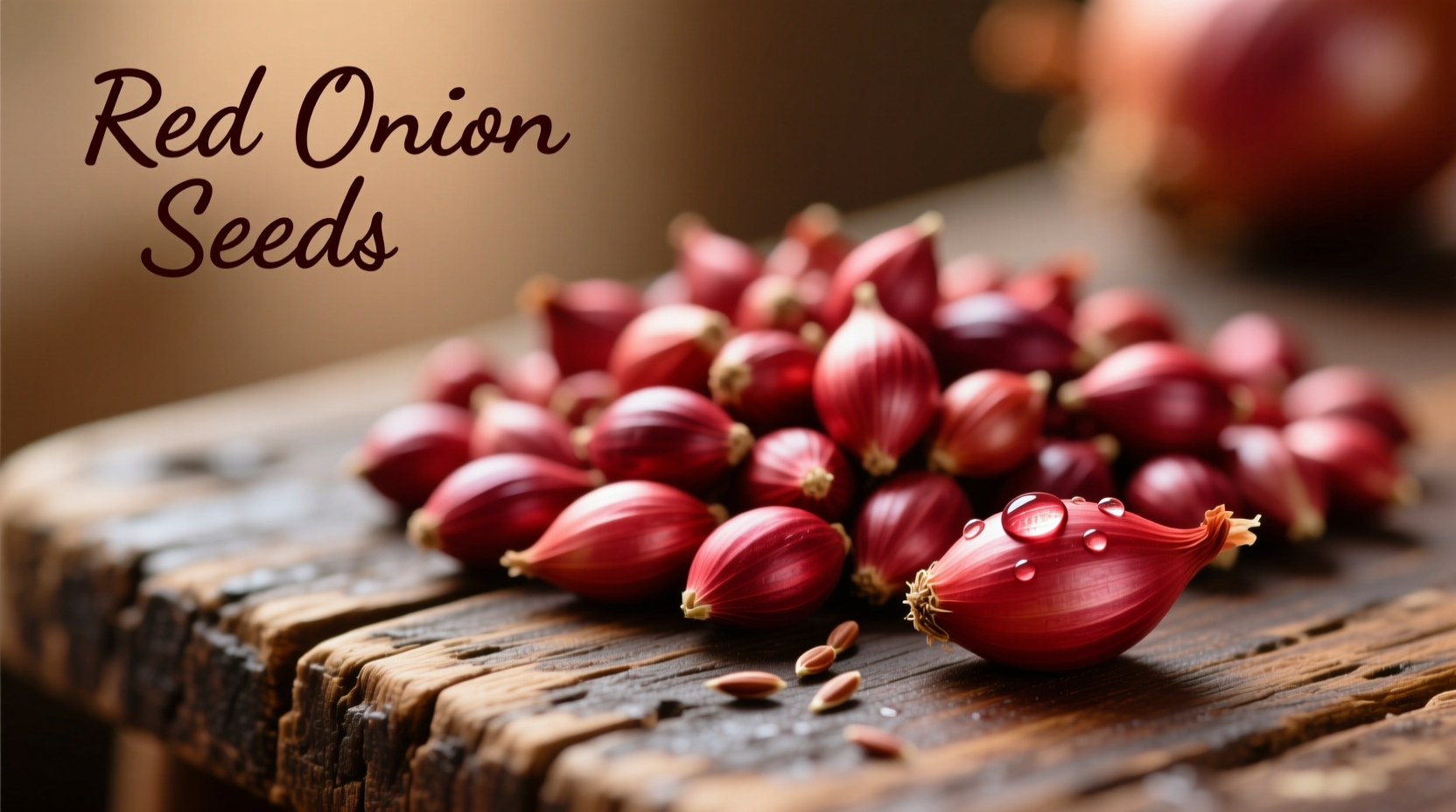Confused about “red onion seeds”? You're not alone. This search term reveals a widespread misunderstanding in home gardening and culinary circles. Let's clarify exactly what you need whether you're planning to grow red onions or looking for that distinctive spice for your naan bread.
Why the “Red Onion Seeds” Confusion Exists
The term “red onion seeds” creates confusion because it mixes two completely different botanical realities:
- Actual onion seeds – All onion varieties (including red onions) produce identical small black seeds
- Nigella seeds – Often mislabeled as “black onion seeds” in spice markets despite being unrelated to onions
According to the USDA Agricultural Research Service, Allium cepa (the common onion) produces uniform black seeds regardless of whether the mature bulb is red, yellow, or white. The color variation develops during bulb formation, not in the seed stage.
Growing Red Onions: What You Actually Need
If your goal is to grow red onions in your garden, here's what you should know about onion seeds:
- True red onion seeds appear as tiny black specks, identical to seeds from yellow or white onion varieties
- Planting timeline: Start seeds indoors 8-10 weeks before last frost date
- Germination requires consistent soil temperature of 65-75°F (18-24°C)
- Full maturity takes 100-120 days from planting
The University of California Cooperative Extension confirms that “onion seed characteristics remain consistent across varieties, with color differentiation occurring only during bulb development.” This explains why seed catalogs don't list “red onion seeds” as a separate product.

The Nigella Seed Misconception Explained
Most searches for “red onion seeds” actually seek nigella seeds (Nigella sativa), which are:
- Commonly called “black onion seeds” in Indian and Middle Eastern markets
- Completely unrelated to onions (belong to the Ranunculaceae family)
- Used extensively in naan, pickles, and spice blends
- Known as kalonji in South Asia and habbat al-barakah in Arabic cultures
The Royal Botanic Gardens, Kew notes that this misnaming likely originated from visual similarity and shared culinary applications, despite the botanical disconnect. Nigella seeds have been used since ancient Egyptian times, with seeds found in Tutankhamun's tomb.
Practical Guide: What to Buy Based on Your Needs
Save time and money by purchasing the right product for your specific purpose:
| If You Want To... | Buy This Product | Look For On Packaging |
|---|---|---|
| Grow red onions | Onion seeds (Allium cepa) | “Red Onion Seeds” is incorrect – look for “Red Onion” variety description |
| Make traditional naan | Nigella seeds (Nigella sativa) | “Kalonji,” “Black Cumin,” or “Nigella Seeds” |
| Prepare Middle Eastern dishes | Nigella seeds | “Habat al-barakah” or “Black Caraway” |
Common Mistakes to Avoid
Based on agricultural extension data from Cornell University, these errors frequently occur when gardeners search for “red onion seeds”:
- Mistaking nigella seeds for actual onion seeds (they won't grow onions!)
- Expecting immediate color differentiation in seedlings (onion color develops months later)
- Purchasing “organic red onion seeds” at inflated prices from misleading sellers
- Confusing onion sets (small bulbs) with actual seeds
Remember: All onion seeds look identical regardless of the mature bulb color. The distinctive red hue develops during bulb formation when anthocyanin pigments accumulate in response to soil conditions and daylight hours.
Where to Source Authentic Products
For gardeners:
- Reputable seed companies like Baker Creek Heirloom Seeds or Johnny's Selected Seeds
- Look for “Red Wing,” “Red Baron,” or “Merlot” onion varieties
For cooks:
- Specialty spice merchants like Penzeys or Diaspora Co.
- Indian or Middle Eastern grocery stores (ask for “kalonji”)
The American Seed Trade Association recommends checking seed packet expiration dates, as onion seeds maintain viability for only 1-2 years under proper storage conditions.
Frequently Asked Questions
Can I grow red onions from black seeds?
Yes, all onion seeds are black regardless of the mature bulb color. Red onion varieties produce the same black seeds as yellow or white onions. The red color develops during bulb formation, not in the seed stage.
Why are nigella seeds called ‘onion seeds’ if they're not related to onions?
This misnomer originated from visual similarity and shared culinary applications in South Asian and Middle Eastern cooking. Nigella seeds have been used since ancient times, with historical records showing their use in Egyptian and Roman cuisines long before modern botanical classification.
How can I tell if I've purchased actual onion seeds or nigella seeds?
True onion seeds are smaller (1-2mm), uniformly black, and have a triangular cross-section. Nigella seeds are slightly larger (2-3mm), matte black with a curved shape, and have a distinctive peppery aroma. When planted, onion seeds produce green shoots within 7-10 days while nigella seeds won't grow onions at all.
Do red onion seeds require different growing conditions than other onion varieties?
No, all onion varieties share the same seed germination requirements. The primary difference emerges during bulb formation, where red onions need sufficient daylight hours (14+ hours) to develop their characteristic anthocyanin pigments. Soil pH between 6.0-7.0 benefits all onion types.











 浙公网安备
33010002000092号
浙公网安备
33010002000092号 浙B2-20120091-4
浙B2-20120091-4